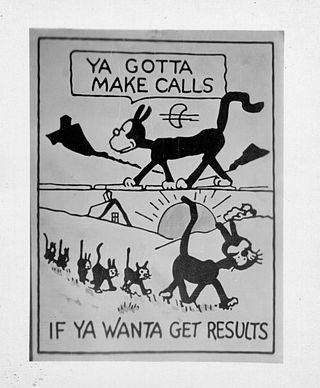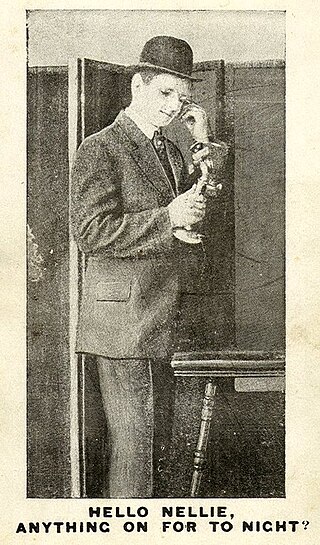Grok is a neologism coined by American writer Robert A. Heinlein for his 1961 science fiction novel Stranger in a Strange Land. While the Oxford English Dictionary summarizes the meaning of grok as "to understand intuitively or by empathy, to establish rapport with" and "to empathize or communicate sympathetically (with); also, to experience enjoyment", Heinlein's concept is far more nuanced, with critic Istvan Csicsery-Ronay Jr. observing that "the book's major theme can be seen as an extended definition of the term." The concept of grok garnered significant critical scrutiny in the years after the book's initial publication. The term and aspects of the underlying concept have become part of communities such as computer science.

Internet slang is a non-standard or unofficial form of language used by people on the Internet to communicate to one another. An example of Internet slang is "LOL" meaning "laugh out loud." Since Internet slang is constantly changing, it is difficult to provide a standardized definition. However, it can be understood to be any type of slang that Internet users have popularized, and in many cases, have coined. Such terms often originate with the purpose of saving keystrokes or to compensate for small character limits. Many people use the same abbreviations in texting, instant messaging, and social networking websites. Acronyms, keyboard symbols, and abbreviations are common types of Internet slang. New dialects of slang, such as leet or Lolspeak, develop as ingroup Internet memes rather than time savers. Many people also use Internet slang in face-to-face, real life communication.
Mise-en-scène is the stage design and arrangement of actors in scenes for a theatre or film production, both in the visual arts through storyboarding, visual themes, and cinematography and in narrative-storytelling through directions. The term is also commonly used to refer to single scenes that are representative of a film.
Jargon or technical language is the specialized terminology associated with a particular field or area of activity. Jargon is normally employed in a particular communicative context and may not be well understood outside that context. The context is usually a particular occupation, but any ingroup can have jargon. The key characteristic that distinguishes jargon from the rest of a language is its specialized vocabulary, which includes terms and definitions of words that are unique to the context, and terms used in a narrower and more exact sense than when used in colloquial language. This can lead outgroups to misunderstand communication attempts. Jargon is sometimes understood as a form of technical slang and then distinguished from the official terminology used in a particular field of activity.
A moral is a message that is conveyed or a lesson to be learned from a story or event. The moral may be left to the hearer, reader, or viewer to determine for themselves, or may be explicitly encapsulated in a maxim. A moral is a lesson in a story or in real life.

A double entendre is a figure of speech or a particular way of wording that is devised to have a double meaning, one of which is typically obvious, and the other often conveys a message that would be too socially unacceptable, or offensive to state directly.
Literal and figurative language is a distinction within some fields of language analysis, in particular stylistics, rhetoric, and semantics.
Circumlocution is the use of an unnecessarily large number of words to express an idea. It is sometimes necessary in communication, but it can also be undesirable. It can also come in the form of roundabout speech wherein many words are used to describe something that already has a common and concise term. Most dictionaries use circumlocution to define words. Circumlocution is often used by people with aphasia and people learning a new language, where simple terms can be paraphrased to aid learning or communication. Among other usages, circumlocution can be used to construct euphemisms, innuendos, and equivocations.
An in-joke, also known as an inside joke or a private joke, is a joke with humour that is understandable only to members of an ingroup; that is, people who are in a particular social group, occupation, or other community of shared interest. It is, therefore, an esoteric joke, only humorous to those who are aware of the circumstances behind it.

A narrative, story, or tale is any account of a series of related events or experiences, whether nonfictional or fictional. Narratives can be presented through a sequence of written or spoken words, through still or moving images, or through any combination of these. The word derives from the Latin verb narrare, which is derived from the adjective gnarus. The formal and literary process of constructing a narrative—narration—is one of the four traditional rhetorical modes of discourse, along with argumentation, description, and exposition. This is a somewhat distinct usage from narration in the narrower sense of a commentary used to convey a story. Many additional narrative techniques, particularly literary ones, are used to build and enhance any given story.
Deaf-mute is a term which was used historically to identify a person who was either deaf and used sign language or both deaf and could not speak. The term continues to be used to refer to deaf people who cannot speak an oral language or have some degree of speaking ability, but choose not to speak because of the negative or unwanted attention atypical voices sometimes attract. Such people communicate using sign language. Some consider it to be a derogatory term if used outside its historical context; the preferred term today is simply deaf.

Visual rhetoric is the art of effective communication through visual elements such as images, typography, and texts. Visual rhetoric encompasses the skill of visual literacy and the ability to analyze images for their form and meaning. Drawing on techniques from semiotics and rhetorical analysis, visual rhetoric expands on visual literacy as it examines the structure of an image with the focus on its persuasive effects on an audience.

A wink is a facial expression made by briefly closing one eye. A wink is an informal mode of non-verbal communication usually signaling shared hidden knowledge or intent. However, it is ambiguous by itself and highly dependent upon additional context, without which a wink could become misinterpreted or even nonsensical. For example, in some regions of the world, a wink may be considered rude or offensive. Depending on the relationship of the people involved, a wink could possibly constitute a sexual gesture.

An innuendo is a hint, insinuation or intimation about a person or thing, especially of a denigrating or derogatory nature. It can also be a remark or question, typically disparaging, that works obliquely by allusion. In the latter sense, the intention is often to insult or accuse someone in such a way that one's words, taken literally, are innocent.

Relevance theory is a framework for understanding the interpretation of utterances. It was first proposed by Dan Sperber and Deirdre Wilson, and is used within cognitive linguistics and pragmatics. The theory was originally inspired by the work of Paul Grice and developed out of his ideas, but has since become a pragmatic framework in its own right. The seminal book, Relevance, was first published in 1986 and revised in 1995.
Exformation is a term originally coined by Danish science writer Tor Nørretranders in his book The User Illusion published in English 1998. It is meant to mean explicitly discarded information.

Hello is a salutation or greeting in the English language. It is first attested in writing from 1826.

A literary trope is the use of figurative language, via word, phrase or an image, for artistic effect such as using a figure of speech. Keith and Lundburg describe a trope as "a substitution of a word or phrase by a less literal word or phrase". The word trope has also undergone a semantic change and now also describes commonly recurring or overused literary and rhetorical devices, motifs or clichés in creative works. Literary tropes span almost every category of writing, such as poetry, film, plays, and video games.
A Scotticism is a phrase or word, used in English, which is characteristic of Scots.

An apologia is a formal defense of an opinion, position or action. The term's current use, often in the context of religion, theology and philosophy, derives from Justin Martyr's First Apology and was later employed by John Henry Newman's Apologia Pro Vita Sua of 1864, which presented a formal defense of the history of his Christian life, leading to his acceptance by the Catholic Church in 1845. In modern usage, apologia describes a formal defense and should not be confused with the sense of the word 'apology' as an expression of regret; however, apology may mean apologia, depending on the context of use.








